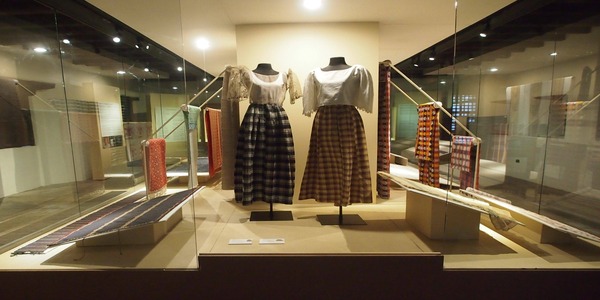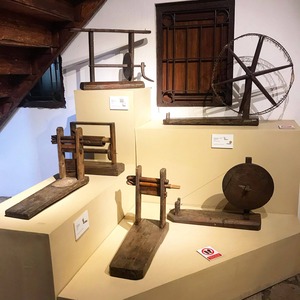| ‹ | Abel-Iloko Exhibition |
› |
|---|
Wooden implements used in the production and preparation of yarn, frame looms, traditionally produced and dyed cotton thread, and handwoven textiles, comprise the Abel-Iloko Exhibition. Various patterns done through different weaving design techniques are shown through the textiles on exhibit.
Traditionally regarded as heirloom pieces, the woven cloth and the patterns that these carry reflect both the weavers’ and consumers’ sense of aesthetics and what to them are culturally meaningful. Apart from their utilitarian functions as garments, blankets and towels, some of the cloth serve as ritual items.
About a third of the abel-Iloko in this exhibition are on loan from Ilocos Sur First District Representative Deogracias Victor B. Savellano, while the rest belong to the National Ethnographic Collection. The exhibition is part of the Hibla ng Lahing Filipino Program, which is a collaboration between the NMP and the House of Representatives’ Deputy Speaker Loren Legarda.
First installed at the Padre Burgos Museum at the NMP-IRMC, the Abel-Iloko Exhibition is set for upgrading and shall be re-opened to the public thereafter.
The Abel-Iloko Exhibition is a permanent exhibit in the National Museum Ilocos that showcases the traditional weaving technique known as "abel iloko" that is unique to the Ilocos region in the Philippines. The exhibit highlights the history, techniques, and cultural significance of abel iloko, which has been a part of the region's cultural heritage for centuries.
The exhibit features a collection of abel iloko textiles, including blankets, scarves, and clothing items, as well as looms and other weaving tools. It also provides information on the various techniques used in abel iloko weaving, such as dyeing and pattern-making, and the different materials used in the process.
The Abel-Iloko Exhibition is known for its informative and engaging presentation of this important aspect of Ilocano culture. It aims to promote the preservation and continuation of the abel iloko tradition, and to raise awareness about the cultural and historical significance of this unique weaving technique. Visitors to the exhibit can learn about the intricate process of abel iloko weaving, and appreciate the beauty and craftsmanship of the textiles on display.

